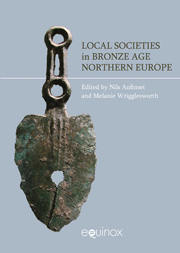Introduction: local societies, regions and processes of cultural interaction in the Bronze Age
Summary
Background
Our departing point for this collection of chapters on the North European Bronze Age has been that our conception of this region is generally framed by two major components. One is the national component, as archaeology per se was a significant part of the national awakening in the nineteenth and early twentieth centuries. Obviously this focused on people, land and unity in order to build a common future. The second component is the fact that the central European Bronze Age (CEBA) has over the past decades played an increasing role in our understanding of the Bronze Age in the northern part of Europe as well. This has political and economic reasons due to the initial development (and later the expansion) of the European Union. This was particularly seen through the 1990s with the inclusion of new member states and the focus on the Bronze Age as a pan-European culture, not unlike the earlier national archaeologies focusing on building a common identity based on a common past. In terms of material expressions the CEBA is particularly rich and expressive, quite different from other parts of Europe, which regard these as peripheral.
- Type
- Chapter
- Information
- Local Societies in Bronze Age Northern Europe , pp. 1 - 10Publisher: Acumen PublishingPrint publication year: 2012



